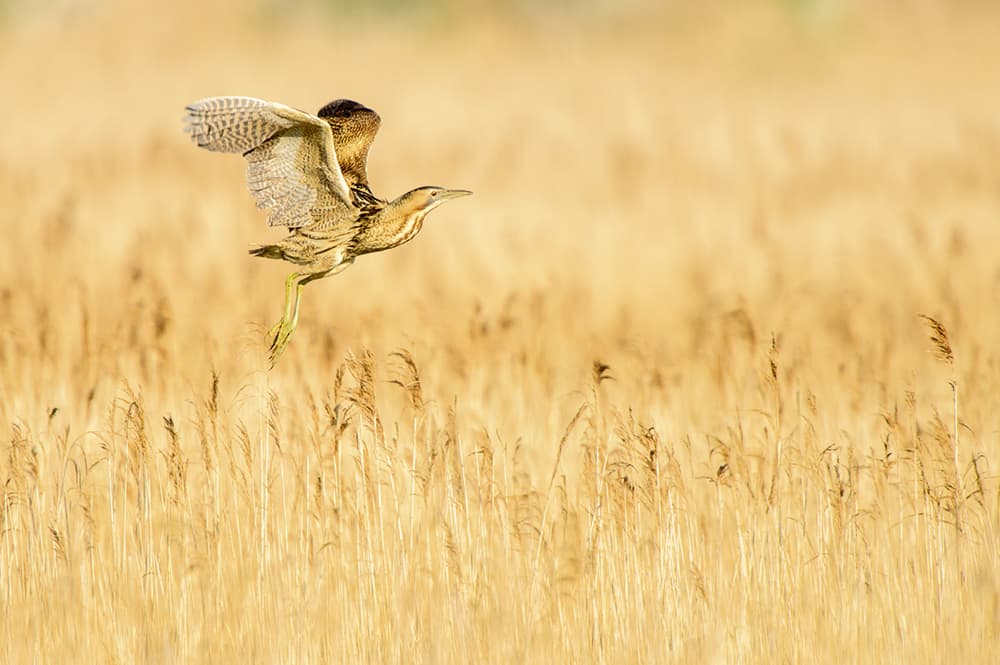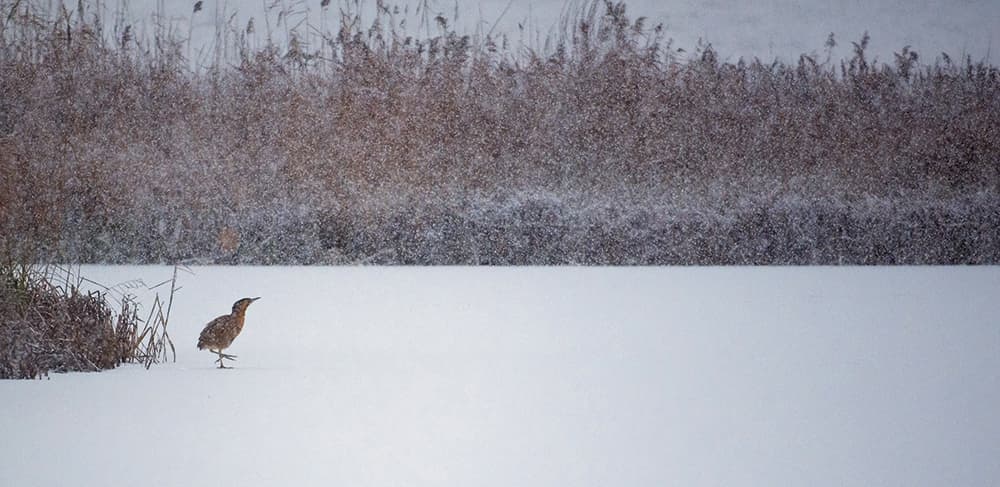About the bittern
One of the UK’s most elusive birds, the bittern has some of the best camouflage in the animal kingdom
- Location Breeding birds are mostly confined to East Anglia, the West Country and other small areas, but birds are far more widespread in winter
- Size 79-80cm, with a 100-130cm wingspan
- Nest A shallow platform of reed stems low across the water within the reed bed, 30cm across
- Diet Fish, amphibians and insects
- Population There were 140 ‘boomer’ males recorded in 2014
Bitterns are one of the UK’s most secretive birds, spending the majority of their time looking for fish in their reed-bed habitat. They are most notable for the male’s unmistakable deep booming sound, which can be heard from over a mile away.
Habitat
Bitterns favour wetlands with large reed beds. They hunt along the reed margins in shallow water, looking for fish and amphibians. Birds will move slowly and keep low to the ground, pausing when they’ve seen something and lowering the tip of their bill into the water before striking. Norfolk and Suffolk are my favourite areas to photograph them in spring and summer – Suffolk’s east coast being the best. In winter, bitterns are more widespread and can be found and photographed all over the country – even in the capital itself.
Best time to shoot
The peak shooting period of the year is any time between November, when they arrive at their wintering sites, through to June, when the chicks fledge. During cold snaps in winter, they are forced out of the reed beds to look for food and will even roost in trees. In the spring, you can photograph them feeding along the reed edges and making display flights. When the chicks hatch, the females will make regular feeding flights between hunting areas and the nest. The best time of day to shoot is early in the morning and towards sunset, as this is when they are the most active. It also coincides with the best light.
Shooting advice
Settings
Bitterns can be difficult to focus on as their plumage lacks contrast and is a muted colour, much like the usual background, so I use continuous AF with a single focus point to reduce the chance of the camera changing focus to the background by mistake. I tend to use aperture priority in most instances, unless the light is challenging or there is something that could confuse the camera, such as a very dark background, when I’ll switch to manual for greater control.
Finding them
Bitterns draw birders and photographers from all over the country, so check your local bird club website (you’ll find that most of these are organised by county) and their latest sightings page for locations of interesting birds. Once you know where you’re going to try shoot, don’t be put off if you don’t see them first time round. I’ve spent countless hours waiting for bitterns to appear, and they regularly don’t show at all! Be patient and persistent and you will see them.
Approach
With bitterns, you often only get a short period of time to photograph them, especially if you’re only seeing them in flight. Because of this, it pays to be ready. After you’ve waited for a few hours with no success, it’s easy to be distracted by something as simple as a mallard flying past – only to look up afterwards and see a bittern in glorious light gliding past at the perfect distance!
I find a tripod helps here, but always stay focused and alert. If you pick up the bird early, focus on it and track it all the way in as it comes into view.
Kit list
 Binoculars
Binoculars
I never go out without binoculars, as it is far easier to spot things with these than with a camera viewfinder due to their clarity and light weight.
 Tripod
Tripod
Photographing bitterns involves patience. A tripod is essential so you can keep your camera at the ready without having to hold it up all the time.
Oscar Dewhurst is an award-winning wildlife photographer who’s dedicated countless hours to photographing bitterns, but also finds time to photograph many other species, from urban foxes to primates in the Peruvian Amazon. www.oscardewhurst.com
For more advice on taking pictures of birds, see our bird photography guide










